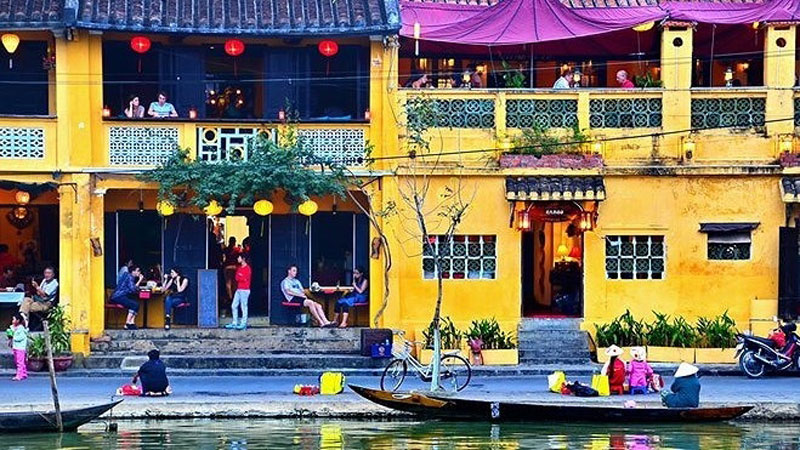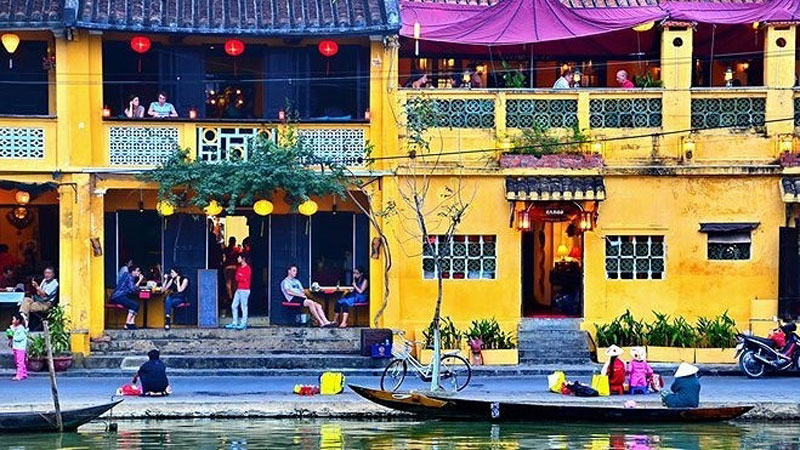



Starting from a small town on the left bank of the Thu Bon River, Hoi An
has risen into a destination for four million visitors a year.
An appeal for help from heritages
Statistics revealed at a recent seminar, entitled ‘Hoi An tourism: Integration and Sustainable Development’, held by Hoi An city People's Committee, raised a concern among the participants. Starting from a small town on the left bank of the Thu Bon River, Hoi An has risen into a destination for four million visitors a year, while the city's population is more than 92,000, which means that there are forty tourists per each local.
Resultantly, the local tourism sector is facing tough challenges from the increasing number of construction sites, which have been built in the buffer zone near the ancient town in order to meet the growing demand of visitors.
According to Hoi An city’s office for culture and information, the city welcomed 1.6 million tourists in 2013, and the figure doubled to 3.3 million in 2017. Over 4.5 million travellers chose Hoi An to spend their holidays during January-October this year. Among the visitors, 3.4 million were foreigners, even higher than the total number of visitors travelling to the city last year
The explosive growth in the number of visitors is occurring in the context that the city’s infrastructure has not yet been fully upgraded and developed, making Hoi An overloaded with vacationers. Meanwhile, the number of visitors from Vietnam’s traditional markets such as Europe and North America, who have rather high spending on trips, has sharply decreased.
The situation is not only seen in Hoi An in particular but also in many places across the country, particularly those being put under the pressure of overheated tourism development.
Thua Thien – Hue province, for example, has struggled with the boom of restaurants, hotels, and trade centres, which have created huge challenges on ancient architecture such as tombs, temples and pagodas across the Huong river.
Ha Long Bay in Quang Ninh province is also in a similar situation. Statistics show that Tuan Chau wharf welcomes nearly 10,000 tourists every day and the number triples in peak season. The crowded number of passengers has affected the intact and pristine beauty of caves located around the bay and the habitat of species there, thereby causing a threat to the heritage conservation.
No trade off of heritages for growth
Heritages are fragile and vulnerable. The situation becomes more severe in the age of mass tourism and commercialisation of tourist activities. Therefore, it is crucial to maintain the harmony between conservation and development.
According to Deputy Head of Vietnam National Administration of Tourism (VNAT), Ha Van Sieu, a cultural tourism development strategy is required in order to develop tourist activities which can promote the values of cultural heritages in line with responsible tourism.
Meanwhile, Prof. Dr. Truong Quoc Binh, member of the National Heritage Council, said that it is necessary to define specific responsibilities of the sectors and agencies who work in heritage preservation and environmental production in order to remove overlapping among them, while clearly pointing out who will be in charge when any problem arises.
The International Cultural Tourism Charter, adopted by the International Council on Monuments and Sites (ICOMOS) in 1999, sets six principles on the management of heritages in the host community. Notably, the second principle stresses the relationship between heritage locations and tourism, saying it is dynamic and may involve conflicting values. It should be managed in a sustainable way for present and future generations.
The principle emphasises that tourism development and infrastructure projects should take account the aesthetic, social and cultural dimensions, natural and cultural landscapes, bio-diversity characteristics and the broader visual context of heritage places.
It also declares that before heritage places are promoted or developed for increased tourism, management plans should assess the natural and cultural values of the resource. They should then establish appropriate limits of acceptable change, particularly in relation to the impact of visitor numbers on the physical characteristics, integrity, ecology and biodiversity of the place, local access and transportation systems and the social, economic and cultural well being of the host community.
If the likely level of change is unacceptable the development proposal should be modified. There should be on-going programmes of evaluation in order to assess the progressive impacts of tourism activities and development on the particular place or community.
Tourist activities and the locals’ daily practices in heritage places should be carried out in line with the code of ethics for heritages. He also stressed the importance of strict management on ecological system in heritage places and the active participation of the local community in heritage conservation.
Once the principle is strictly observed, it will be able to create a harmony between tourism development and heritage preservation.